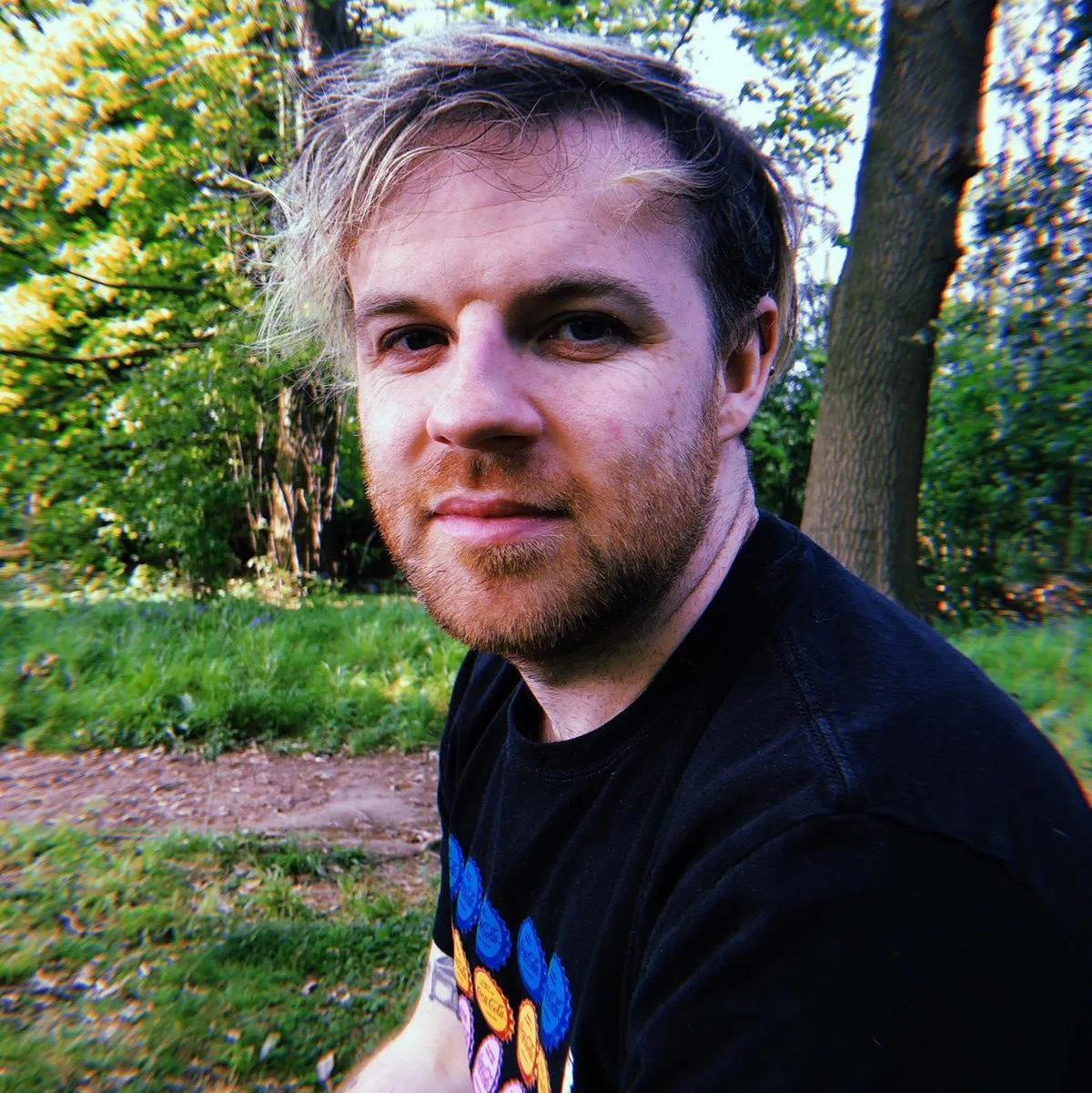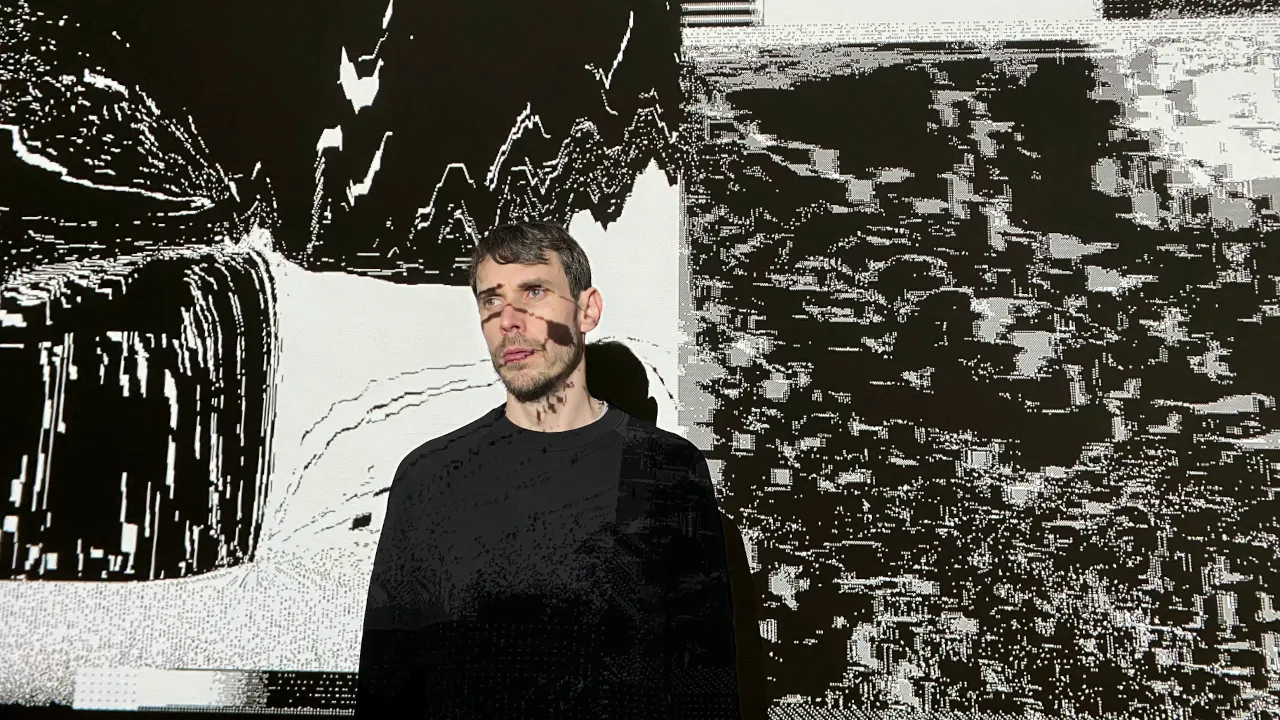Fresh off of co-directing Metallica’s “Chasing Light” music video, which featured his artwork, digital expressionist and internet art native Kim Asendorf has revealed his latest NFT drop.
Curated by Peggy Schoenegge for the Feral File platform, Asendorf’s "Colors of Noise" is a series of 50 unique artworks minted on Ethereum, of which 47 pieces will go on sale on Thursday, May 18 for 0.25 ETH (about $450) each.
“Each one is an ode to sound design,” the German artist tells Decrypt, with the project marking the first time in his career where he’s brought visual and audio art together.
COLORS OF NOISE
2023-05-18@FeralFile pic.twitter.com/6fYUv3jhJI— KiM ASENDORF (@kimasendorf) May 17, 2023
Using the Web Audio API to generate white noise, Asendorf then created a filter to separate the different colored noises within that. The waveform for those different sounds was then recreated within a four-pixel-high wave, which became the trigger for the accompanying animation.
“It’s a very experimental mix of automated algorithms and reaction diffusion algorithms that reimagines what I feel when I hear these noises,” Asendorf explains, with 16 different animations on offer and three components to each piece. Pressing play will start the audio-visual art, while pausing it will freeze the waveform in place as the triggered animations fade out.
Taking colored noises that have already been defined by audio engineering science, plus one created by Asendorf himself (yellow noise), "Colors of Noise" is an immersive piece of work that never repeats thanks to the generated noise and animations that react in real time. The idea is that each NFT can cause a reaction in people, too.
“I don't really consider it interactive art,” says Asendorf. “People should hopefully just be interested in watching it, letting it sink in, and maybe allowing it to hypnotize them for a while.”
Preview of @kimasendorf’s COLORS OF NOISE series, opening tomorrow on Feral File, at 14:00 UTC+0. Curated by Peggy Schoenegge.
Collectors of the artwork will also receive a limited edition audio cassette, containing 60 minutes of material. pic.twitter.com/T8wpEfUvVy
— Feral File (@FeralFile) May 17, 2023
Asendorf says that he’s “always been interested in electronic music” and sounds that can be made with digital and analog synthesizers alike, and adds that he finds it fascinating to see how people react to everyday sounds.
“I don’t know if it’s the same for everyone, but some noises are very calming," he continues. "Some you hear all the time, but your brain filters them out."
White noise typically helps a person sleep, pink noise promotes concentration, and brown noise enhances relaxation. "Colors of Noise" is an artistic “investigation” into how people feel when they hear these different sounds.
“It’s experimental, because I have no idea how people will feel when they’re exposed to them,” Asendorf explains. “With things like Instagram, you just keep scrolling even if you see something you like. My work needs time to sink in, but hopefully people will think it’s interesting enough to stop scrolling.”
“People will need time to figure out if they like it, if it helps them, or if it disturbs them,” he adds.
Originally, the "Colors of Noise" NFTs were going to be entirely randomly generated—but after Asendorf saw what had been created, he decided to step in and curate the series. “I really had to compose each piece, so that I liked every output and each one made sense to me,” he says.
Feral File describes the project as living at the “intersection between art and technology,” but Asendorf doesn’t see the divide. “I grew up with computers, Nintendo consoles, and Game Boys. I feel like a native to this technology, so using it to create art just feels natural,” he says.
Going forward, Asendorf wants to incorporate more sound into his work to create further audio-visual and audio-reactive pieces. He’s currently developing a few tools to help him with this, including MIDI controllers for a browser. It comes after he co-directed the recent video for Metallica’s "Chasing Light" with Dina Chang, and the clip used animations that were “a bit” audio reactive.
The tech behind "Colors of Noise" isn’t designed to work live in a gig scenario, generating visuals as an artist plays, due to the various frequencies and the high compression of the sound. However, Asendorf does want to “investigate” how his work could be used in context of sound performance. There is already Vjay software that does the job, but Asendorf wants “try to find my own unconventional way to connect these things."
Asendorf describes his work as an “outlet,” and likes how it can be created in a “low-tech environment” with just a computer, a code editor, and the internet. He has been creating digital art for close to 20 years now, but believes there’s a “new dynamic” in play with the rise of Web3.
“Now you don’t have all the gated brands, it feels a lot more personal,” he says. “You also have direct contact with collectors. They tell you that a piece of yours has been running nonstop on a screen in their house for a week straight, which is amazing. You can recreate a museum experience at home, and it’s great to know that your work is actually somehow in other people’s lives.”

